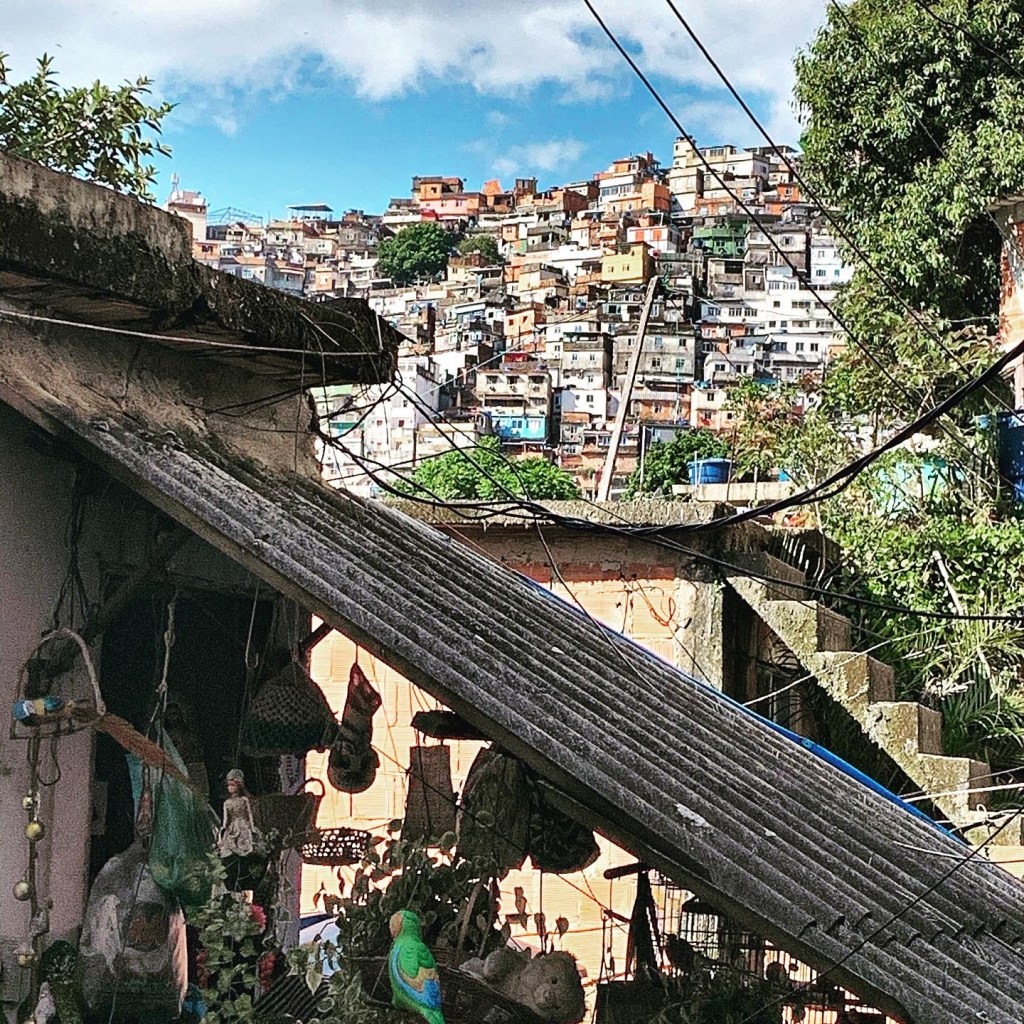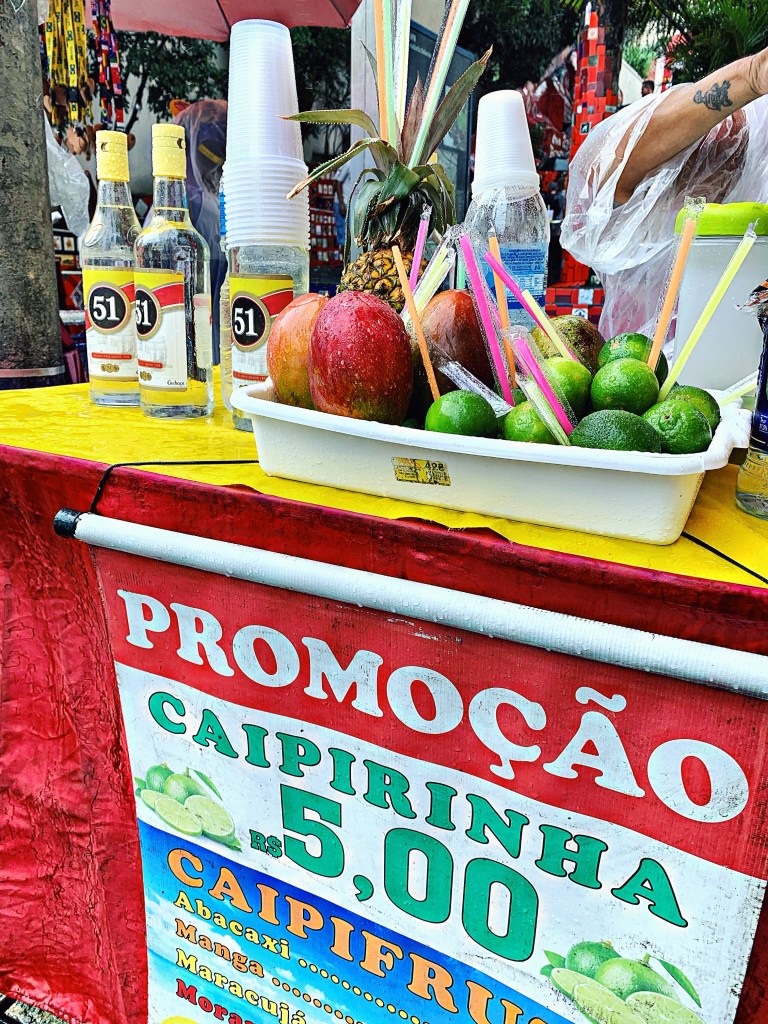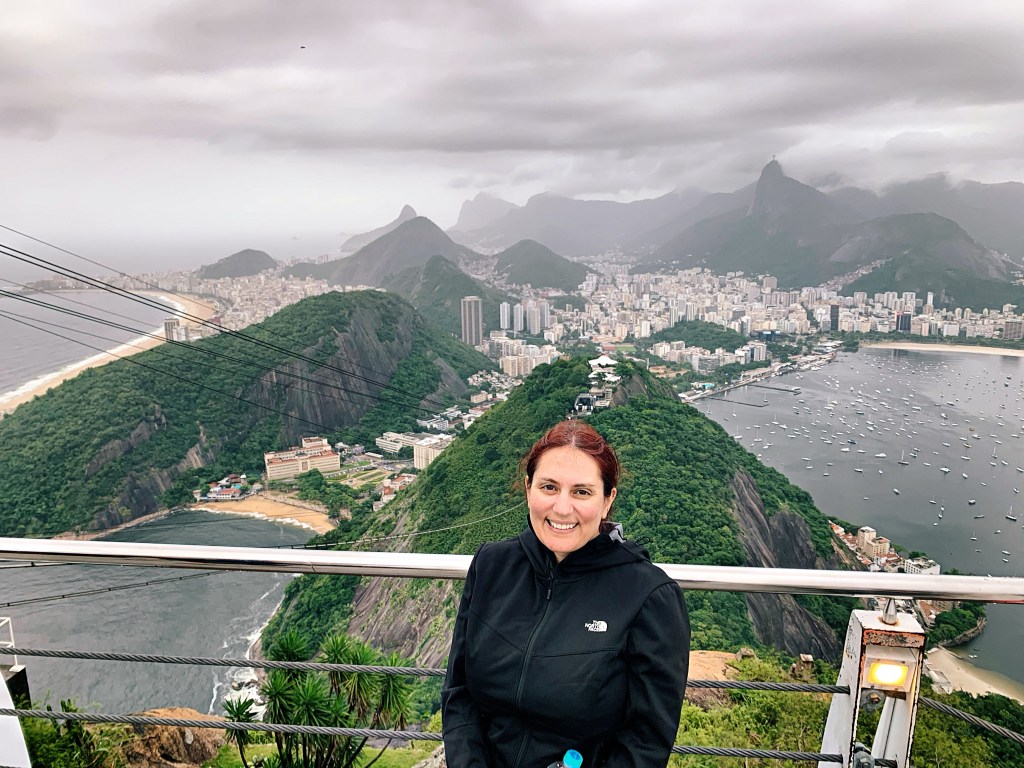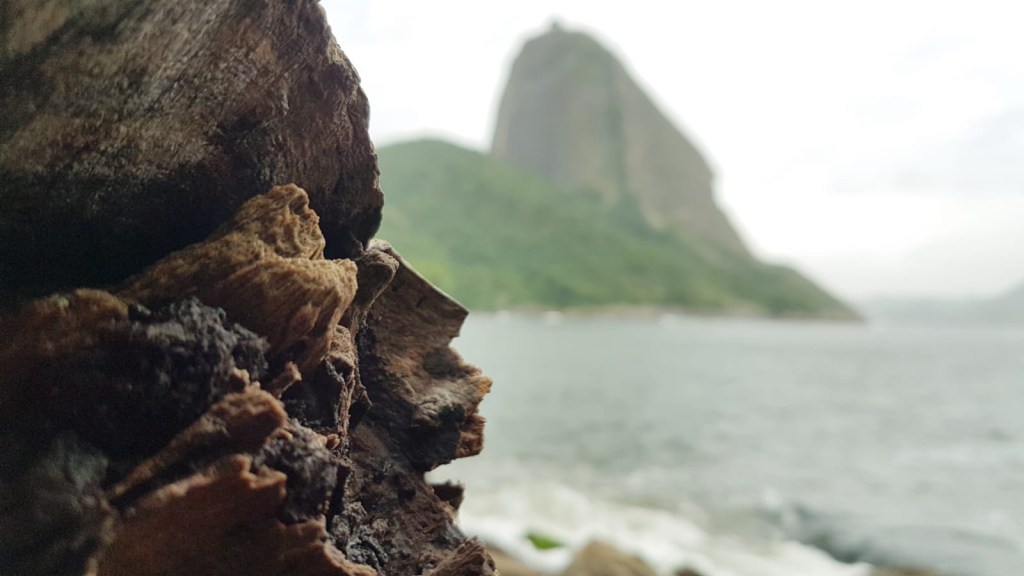Stop 3 on my South American journey! Staying in Copacabana at the Royalty Rio Hotel. Two blocks from the famous Copacabana beach! Brazil is such a large country with so much history. Whilst I will be travelling to a few other places in Brazil its scale makes it impossible to cover in such a short space of time. I’ll update you on my highlights as I go!
To awaken quite alone in a strange town is one of the most pleasant sensations in the world.
Freya Stark

I have a couple of days here on my own before I pick up the Gadventures group tour around Brazil and Bolivia.
A very brief history..
Its believed early inhabitants of the Americas arrived from 12000 to 8000 BC, crossing land that’s now submerged. The Portuguese arrived in 1500 AD, and claimed possession of the land, believed at first to be an island. By this time there were somewhere between 2 and 4 million indigenous people, in over 1000 tribes speaking 1000 different languages, in what is now known as Brazil. There are currently believed to be around 900,000 indigenous people in over 200 tribes.
After the numbers dropped to 300,000 in the 1980s there were fears they might die out completely. International concern groups helped out and now Government policy supports them. It seems they are now both supported and respected with 12% of the land being indigenous, serving less than 1% of the population.
City Tours
I used and would recommend ‘Be a Local’. You can contact them via WhatsApp on this number: +55 21 97973-1442. They communicate in English almost immediately, and you can easily pay by card on there site. They run small group tours on mini buses or in taxi’s depending on size, with English speaking guides.
I did the city tour which covers the main sites like Christ the Redeemer, Sugarloaf mountain, Lapa steps and Santa Teresa; and the Favela tour. Unfortunately it rained for the city tour but was still impressive and we managed to see everything. For the Favela tour some money goes back to the community to support the kindergarten.
The Favela
I visited Rocinha, the biggest favela in the whole of South America. The favelas are high in the mountains, we got a great view from the top then wandered down through the narrow uneven streets. You have to look where you’re walking, there is rubbish, sewage and dog shit everywhere, and water running down through some of the streets. It’s a difficult walk for the disabled or the elderly as it’s so steep and uneven.

Brazil is a country rich in natural resources and whilst politicians aren’t great anywhere there is a lot of corruption in Brazil that doesn’t let everyone enjoy this natural wealth.

Thus the contrast we see of rich people living so close to poor. The poorer people didn’t have anywhere to live so they invaded, took the land and settled. Soldiers also came back with no government support and nowhere to live so took to the favelas. They have there own communities with everything you could need, shops, bars, restaurants, hairdressers, gyms, martial arts etc. Everything accept a real school. Our guide told us the government want to keep the people uneducated to make elections easier.

The first favela settled in the late 19th century and was called Providence. Rosinga came about in the 1940s and has the largest population of all the favelas at over 100,000 people.

There are around 700 different favelas and they make up approximately 20% of Rio’s population.
Why are they called Favelas?
To clear out the hills they had to remove the favela bush. It’s really difficult to clear with hard spikes sticking out of it and gives most people an allergic reaction. Hence the name, The Favela.
Inside Rocinha there is one Main Street and many narrow paths off of it, like a maze. As we wandered we were told where we could take photos and where it was most definitely not allowed. Tourists have been visiting since 2006, as long as you don’t photograph the locals they let you pass.

The area is run on drugs, power, weapons and corruption. There are 4 main gangs, Red Command is the largest. Militia is run by the police and said to be the most corrupt.
The police don’t really enter the favelas, they stay one at each end, the gangs run there own towns but as they are always watching in some ways safer as long as don’t take photos of them. If someone stole your phone on street, in say Copacabana or Ipanema, you’d have to find a policeman, the thief is gone and you’re never getting it back. In The Favelas as people are watching everything with binoculars, apparently if someone took phone they’d be shot dead and the phone returned to you with an apology for the inconvenience.

A story about The Favela I got told not long before coming here, I hope I’ve accounted it correctly.. Having visited it sounds more then plausible. The mother of one of the senior gamg leaders recently needed to go to hospital and called an uber. Four uber drivers accepted the ride then cancelled it once they realised where it was. (I assume she eventually made it to hospital after the delay). As revenge, her son kidnapped and subsequently killed 4 uber drivers.

Lapa Steps
The Lapa steps for me are one of the more impressive sites in Rio. The art is cool and you can get a caipirinha and chill out while you wander round taking it all in. The benefit of going when it’s raining is that it’s much quieter!

Also known as the Selarón steps named after the Chilean born artist Jorge Selarón. It began as him repairing the dilapidated steps outside his house in 1990.

Initially he was mocked for the brightly coloured tiles, but he used yellow, blue and green to represent the Brazilian flag and red for his Chilean home flag. He said it was his gift to the people of Brazil.

When he began he scavenged for tiles but eventually tourists began to donate tiles from there home countries. They were finished in 2013 and there’s 215 steps in total.
Some recommendations of places to go in Lapa:
Bar Brasil, Restaurante and bar Nova Capela, Boteco Belmonte.
Christ the Redeemer
The famous Christ the Redeemer statue synonymous with the city of Rio stands tall at 38m on Corcovado mountain. The arms outstretched measure 28m wide. Built in 1920s as an Art Deco style created by a French sculptor and made of soapstone and concrete.

It’s not the easiest place to get to, being part of the tour saved us a lot of time. You can get a taxi or it’s possible to get there on public transport. the cost is 46 real for an entrance ticket. All fees were included in the city tour price.
Keep hold of your ticket you need it to get in an out. A national park bus will take you the last 5 minutes up to the entrance.
Sugarloaf Mountain
Sugarloaf mountain is 200m high and named as it’s the same shape as sugarloaf cakes. You get a cable car up to a viewpoint and another up to the top of the mountain – the views are stunning!

The cable car was originally set up in 1912, fits 65 people and takes around 3 minutes. The first generation of cable car was from Germany. The current one is third generation from Switzerland in 2005.

Again the ticket was included and cost 110 real, and you need to show it numerous times. The tickets are valid for ten days so if the weather isn’t great on the day of your city tour and if you still have some days left with a better forecast you can keep it to use on a different day. It is only valid for one use though.
Food and Drink
No visit to Rio is complete without trying the local cocktail – Caipirinha – the unofficial Brazilian National Drink! The main ingredient is Cachaça, a high proof sugarcane alcohol with crushed lime, sugar and ice. There are a number of different versions, you can replace the cachaça with vodka or the lime with numerous other fruits. I tried mango and pineapple too but I enjoyed the traditional lime the most.
Brazilians love to drink, and not just alcohol, visiting a juice bar is highly recommended. The choices and flavours are delicious and fresh. There’s the popular mangos, passion fruit, watermelon, avocado, then some less well known Amazonian fruits to experiment with!
Obviously I found a great sushi restaurant – Soy. Its on Santa Clara just off copacabana beach and the sashimi was so fresh and delicious!


In the evening there’s some bars on the beach and we found one with a great vibe playing some local samba music.
I’d also recommend Beco de Garrafas, a cosy bohemian place with music most nights including bossa nova, samba and jazz.
Some cool restaurants in Ipanema are:
The girl from Ipanema Bar, where the famous song was written – Restaurant e Bar Garota de Ipanema, and Restaurante Vinícius e Bossa Nova.
Santa Teresa
This is also a really cool area to hang out in. The Portuguese influence is evident and it has some great music bars to chill out in. It’s known for its art, music and culture. Amy Winehouse stayed there 3 months before her death.

Some recommendations of bars and restaurants in Santa Teresa: Bar do Mineiro, Bar do Portela, Aprazível restaurant.
The Practical Stuff
Other recommendations of things to do in Rio if you have time, a visit to the Botanical gardens, the museum of tomorrow, Mural Etnias graffiti street art, or catch a football game.
Safety first! Brazil, and Rio in particular has a reputation for safety concerns, but as when you travel anywhere be careful and sensible and you should be ok. Dress down and leave expensive jewellery and accessories in the safe in the hotel. Along with passports, only carry cash you’ll need for that day. Use ATMs inside buildings and be aware of your surroundings. After dark, don’t walk along empty streets or deserted parks.
The currency is the Brazilian Real. It’s circa 5 Real to the £ sterling. ATM’s are widespread in Brazil. Credit cards are accepted at most restaurants, shops and hotels. Some cash points will charge you a withdrawal fee of around £5.
The language is Portuguese – you’re at an advantage if you know some Spanish. English is not widely spoken so I recommend learning a few words / key phrases.
Weather – January is hot and humid! But expect rain at times.
The dress code is casual but it’s a good idea to have something a bit smarter got a night out. Given the heat and humidity lightweight and natural fabrics are best. Pick up some Havaianas while you’re here – everyone’s wearing them and they’re so cheap – seems a shame not to!

Apparently in the bigger cities in Brazil such as Rio it’s safe to drink the tap water though is not recommended as it tastes awful! I concur just from using it to brush my teeth! So better to stick with bottled water.
There are not many public toilets though most bars and restaurants will let you use them. Bus and rail stations usually have public facilities available for a small charge – around 1 or 2 Real.
Next chapter for me in Brazil is Ilhe Grande and Paraty!


Fab blog Kiran. It’s so interesting.
Can’t wait to see your Havianas!!
Hope you’re finding some nice bottled water instead xx
LikeLiked by 1 person
Thanks Emma glad some people are enjoying it! Hope all well xx
LikeLike
Very informative blog for me as I visit in June fab photos.Thanks x
LikeLiked by 1 person
Glad it’s of use! You’ll have a brilliant time! Are you travelling round Brazil? x
LikeLike
My favourite Sunday afternoon pastime is now catching up on your blogs – so far it all sounds awesome.
Hope time goes slowly for you 😊
LikeLiked by 1 person
I’m glad you’re enjoying them, yes all good thanks, just had the best seafood platter on Ilhe Grande Island 😊
LikeLike
I’m travelling to Peru Bolivia Paraguay Argentina for 1 month with journey Latin America small group tour with a couple of days in Rio by myself.Im really good thanks I know your ok !x
LikeLiked by 1 person
Sounds amazing – are you on Facebook or Instagram so I can follow your pictures and journey? x
LikeLike
No unfortunately not I’ve never been one for social media.I may go on Facebook or Instagram before I go though.Your trip looks amazing looking at your photos.Living life to the full great!x
LikeLiked by 1 person